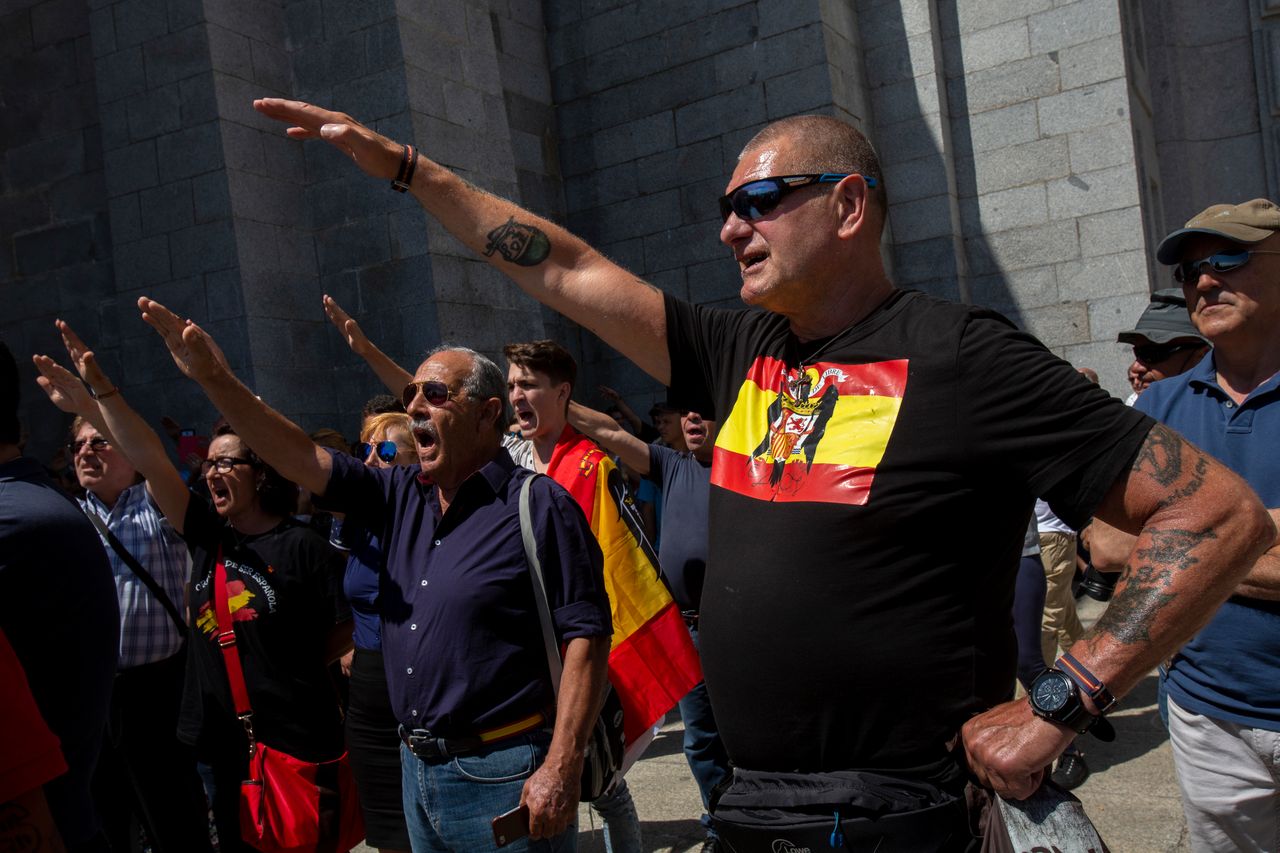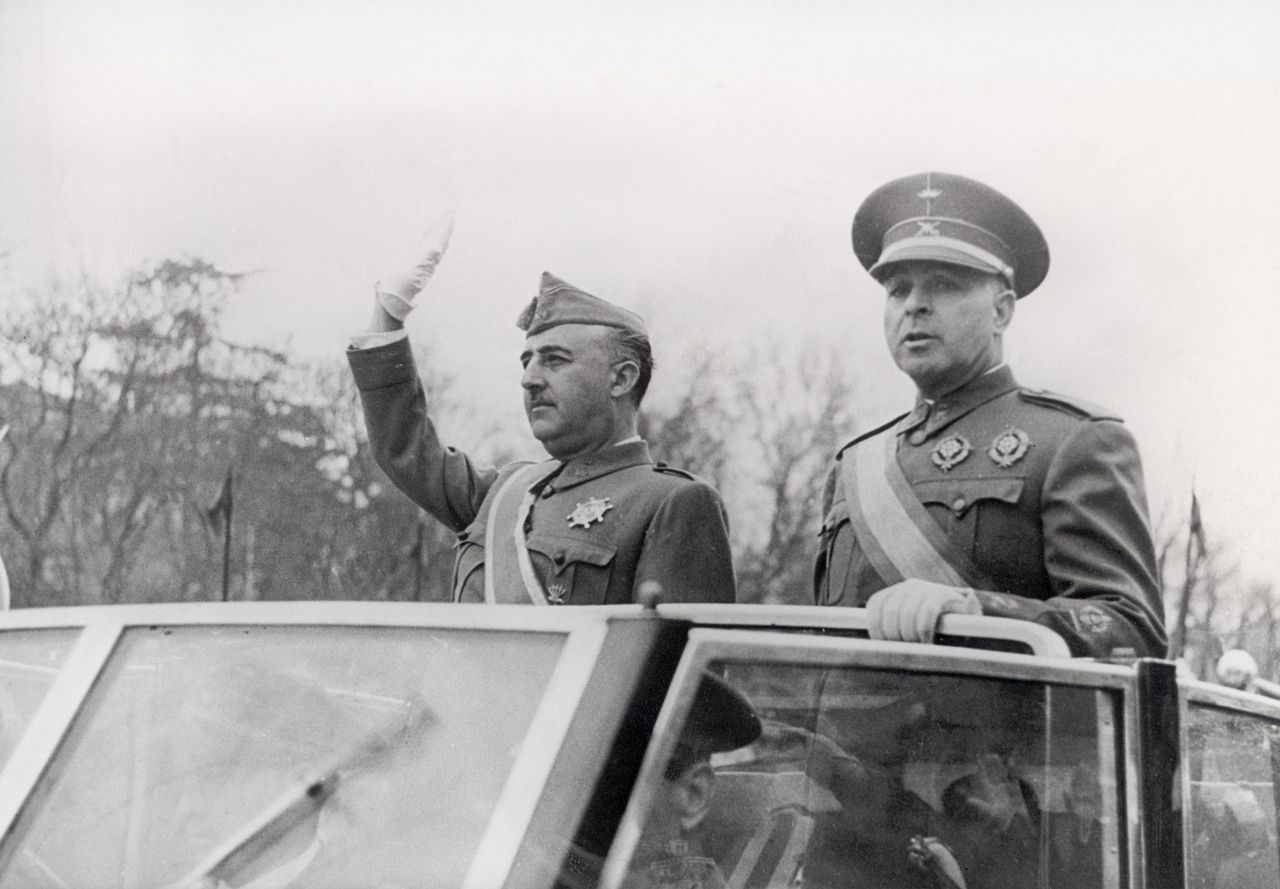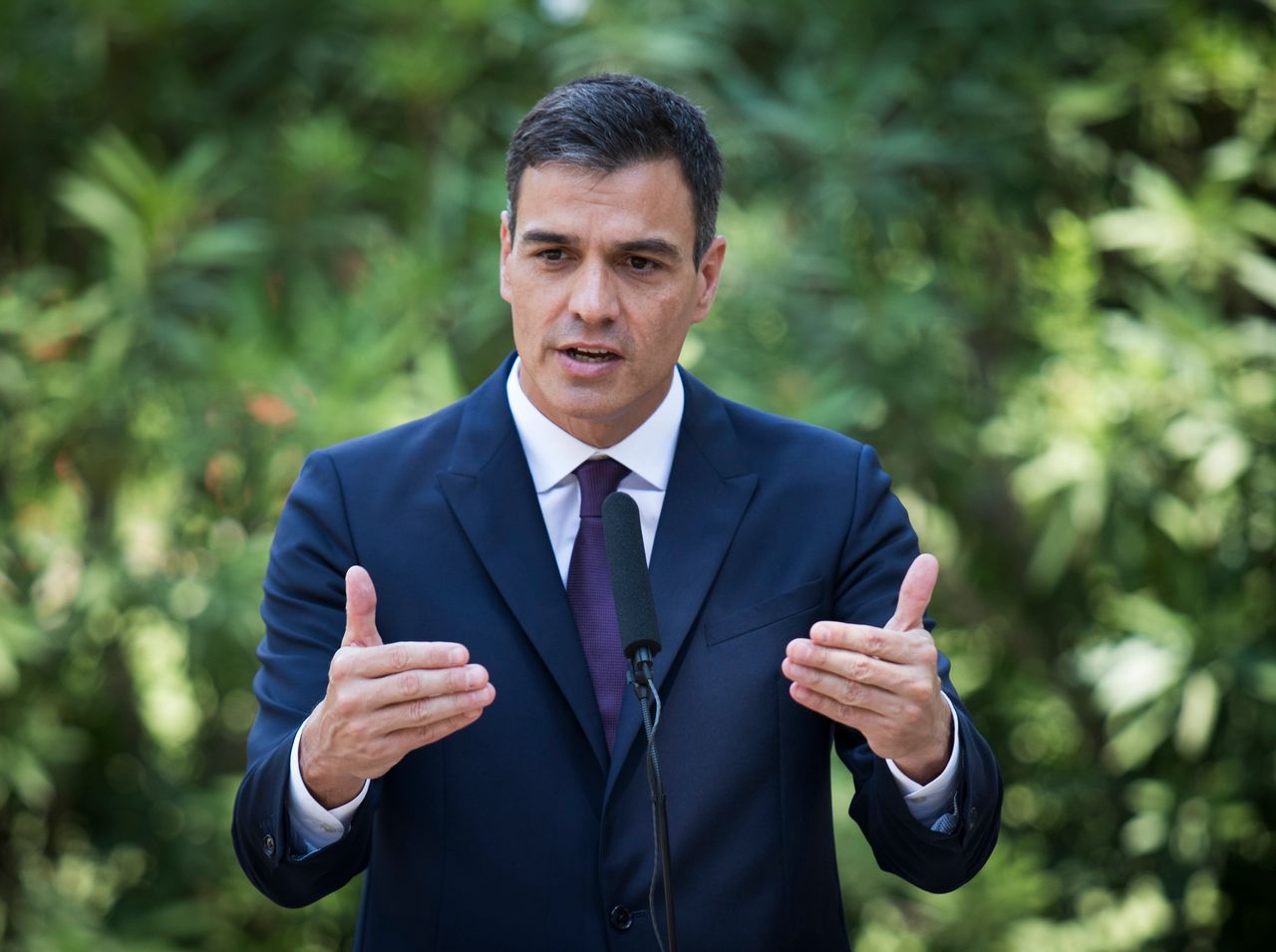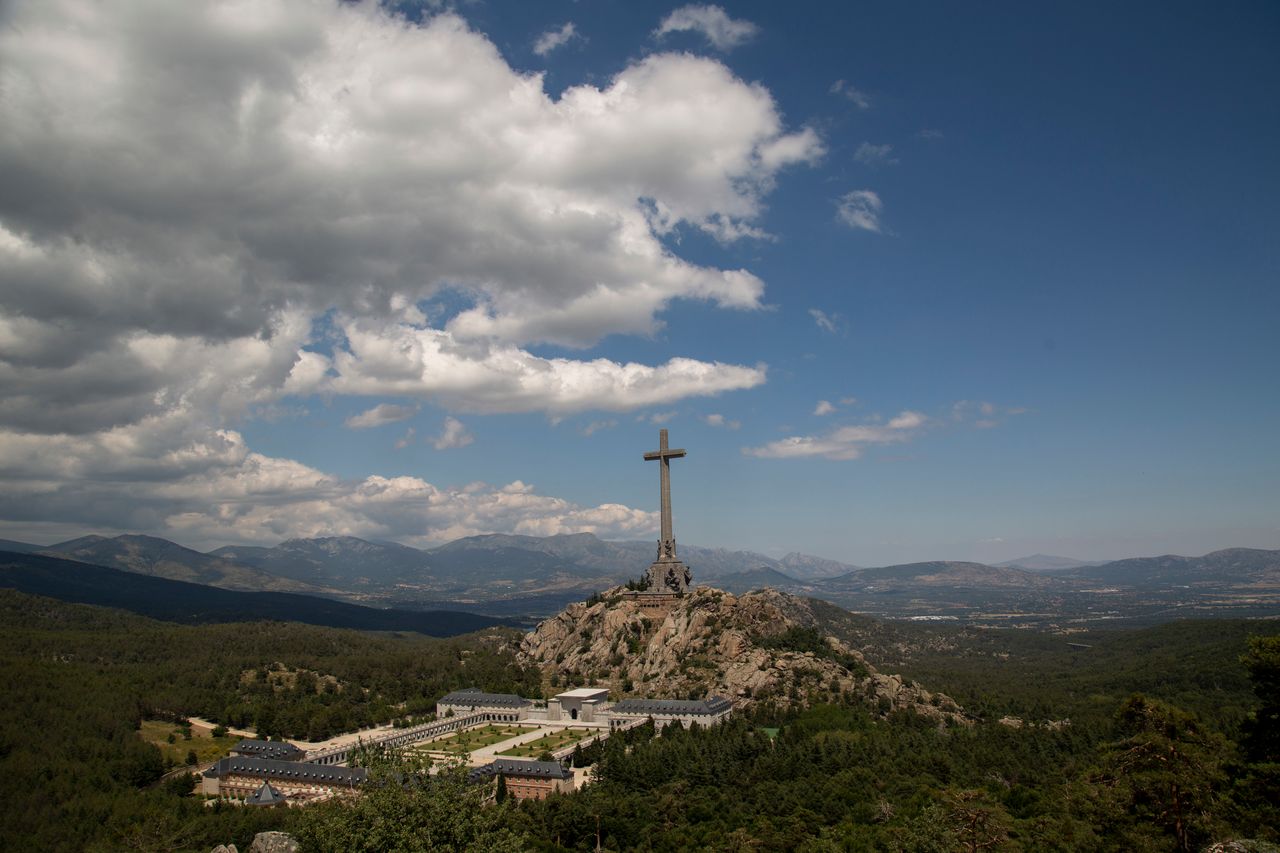MADRID — In a country increasingly carrying the load for Europe’s so-called migration crisis and wrestling with the eternal issue of Catalonia’s independence, Spain isn’t without its fair share of 21st century problems.
However ― with echoes of what to do with the 1,700 remaining Confederate symbols still spread across the United States ― it’s the exhumation of Spain’s long dead Civil War leader from his very public resting place, that has become an open sore among Spaniards.
Francisco Franco’s 1939-1975 rule remains a highly sensitive topic more than four decades after his death. Tens of thousands of the fascist dictator’s enemies were executed and imprisoned in a campaign to wipe out dissent, and as many as 500,000 people died in the preceding civil war, which split Spain in two.
But since the coming of democracy, no Government ― whether left-wing or right-wing ― had dared to suggest the possibility of exhuming Franco’s body.
Until now.
In Franco’s shadow
Visible from miles around, Franco’s resting place literally casts a shadow over Spain. But the clock is ticking on its future, after Spain’s new left-wing Government recently used a loophole to approve exhumation, and give Franco’s family a September 15 deadline to decide where they would like the dictator to be reburied. The formal process to begin the exhumation began on Friday August 31.
The exhumation of Franco would mark a remarkable turnaround. After victory in the 1936-1939 Civil War in which he led a right-wing uprising that deposed Spain’s democratic government, Franco ordered that a gigantic mausoleum be built 30 miles (55 kms) away from Madrid, for which he used hundreds of prisoners from the conflict’s defeated side as labour force.
The intention was to honour the war dead, although the glory was only intended for those who had supported Franco. Before inaugurating the mausoleum known as Valle de los Caídos or Valley of the Fallen, the dictator ran into a problem ― the amount of space was greater than its demand. With no time to lose, he felt forced to fill in the empty spaces, which he completed with the victims from the opposing side. The result was 35,000 victims were buried there from both sides.
Franco died in 1975, and his body lies at that same place, in a pit next to José Antonio Primo de Rivera, founder of Spain’s extreme-right party Falange Española (Spanish Phalanx) and one of Franco’s spiritual leaders. Since the day he was buried, there are always fresh flowers present at the gravestone, and the building has become a pilgrimage site for those who are nostalgic for Francoism.

In other words, since 1975 any Spaniard has been able to happily visit the tomb of the dictator who ruled the country with an iron fist and led to the deaths of tens of thousands. In fact, even without visiting the site, Franco’s resting place is almost impossible to miss. The Valley of the Fallen has the world’s largest cross, and with a height of 500ft (150 metres), it’s visible from dozens of miles away.
While the mausoleum has become a cult place for right-wing extremists, it has brought humiliation to the dictatorship’s critics. For many Spaniards, still being able to see the Valley of the Fallen necessarily implies remembering Franco. The dictator. Tonnes of stone that have prevented the healing of the open wound left by the Civil War.
“Tonnes of stone that have prevented the healing of the open wound left by the Civil War”
Governments have dodged the Franco question for years, either due to its contentious nature, or because it was not seen a priority, meaning Franco’s tomb has continued to be accessible to all.
Pedro Sánchez’s arrival, however, has turned around this situation. Aware that the decision to exhume Franco’s body would be well received by his voters, Spain’s new left-wing prime minister announced just a few weeks after coming to power that one of his priorities would be to close the wound left by the Civil War by removing Franco’s body from the Valley of the Fallen.
Since then, Spain has engaged in an intense and sometimes extremely heated conflict ― forming three different positions:
- Those who support the Government ― basically left-wing voters ― understanding that they cannot continue to honor a dictator, not even for one more year.
- Those who deem it an unnecessary controversy and defend the idea that reopening the debate about Franco’s corpse does not help at all to turn the page. As they state, the best way to forget Franco is to ignore him.
- Those who totally reject his exhumation and want everything to stay the same.

Franco splits Spain again
According to a YouGov survey for HuffPost Spain, 41% of Spaniards are in favour of exhuming Franco, while 25% think it is a bad idea. Thirty-one percent are indifferent to whatever they do with the dictator’s body. What is more meaningful is that 57% of respondents believe exhuming Franco will not help to close the wounds caused by the Civil War.
Sánchez has made a decision evaded by the six preceding prime ministers. First of all, because they were aware that anything related to the dictatorship meant pouring salt on a wound that has not closed. Secondly, because they thought society needed yet more years ― democratic maturity, as we call it in Spain ― in order to permanently close a gloomy period in this country’s contemporary history.
In spite of everything, Sánchez has not hesitated for a second. And he has not had it easy. Spain’s Partido Popular or People’s Party (PP) ― the main opposition party ― is aware that not all of their voters are nostalgic for Francoism, but they also know that most of those who are nostalgic for Francoism cast their votes for them. That is the reason why the PP has been against exhuming Franco’s body. Albert Rivera, leader of Ciudadanos ― a center-right party ― has also criticized the decision by arguing that we have to look towards the future, not the past. Only Podemos ― a left-wing party ― has applauded the exhumation.

Due to the lack of consensus, Sánchez has made use of a loophole to approve the exhumation without the need for the parliament’s approval by absolute majority, something which has triggered criticism from right-wing parties, which neither like the form ― the exhumation ― nor the substance, most of all.
Another issue reopens
Apart from the political and social controversy, what every Spaniard knows is that Francisco Franco’s body ― which was embalmed upon his death on November 20, 1975 ― will cease to rest, 43 years later, at the Valley of the Fallen. It is now up to the dictator’s relatives ― who were given time until September 15 ― to decide the location of the military man. Should they not offer an alternative, the Government itself will decide where to move the body. As the Government’s executive branch explained, it will be a “decent and respectful” place. This is the first step of several legal procedures that must be undertaken before the gravestone is lifted from the tomb. The Government wishes that Franco be buried in a different site “before the end of the year.” Carmen Calvo, the Government’s Vice Premier, pointed out that “we will try to do it as quickly as possible, while complying with all legal guarantees.”

Once Franco truly becomes a thing of the past, another issue will be reopened which has dominated debate in Spain ― what to do with the Valley of the Fallen. There is no consensus even about the fate of this colossal building, and once again, there are three different stances: the first one, the more conservative option, defends the idea of leaving it as it is. The second one advocates reconciliation, which would mean turning it into a Memorial Center and a Tribute Site to the victims of the Civil War and Francoism. The third option is, without a doubt, the most categorical one: blowing up the whole complex ― which includes a flight of steps, an esplanade, a basilica and an abbey ― and thus turning the page the fast way. Pedro Sánchez is in favor of turning it into a civil cemetery.
The two Spains ― that of the victors and that of those defeated in War ― have come back once again this summer. But there is a difference this time ― the current conflict does not go beyond a more or less intense exchange of opinions. This is normal under democracy. Sixty years ago, disagreeing could lead to death.
For that reason, and despite the intensity of discussions, only a few may doubt that things have changed in Spain. For the better.
